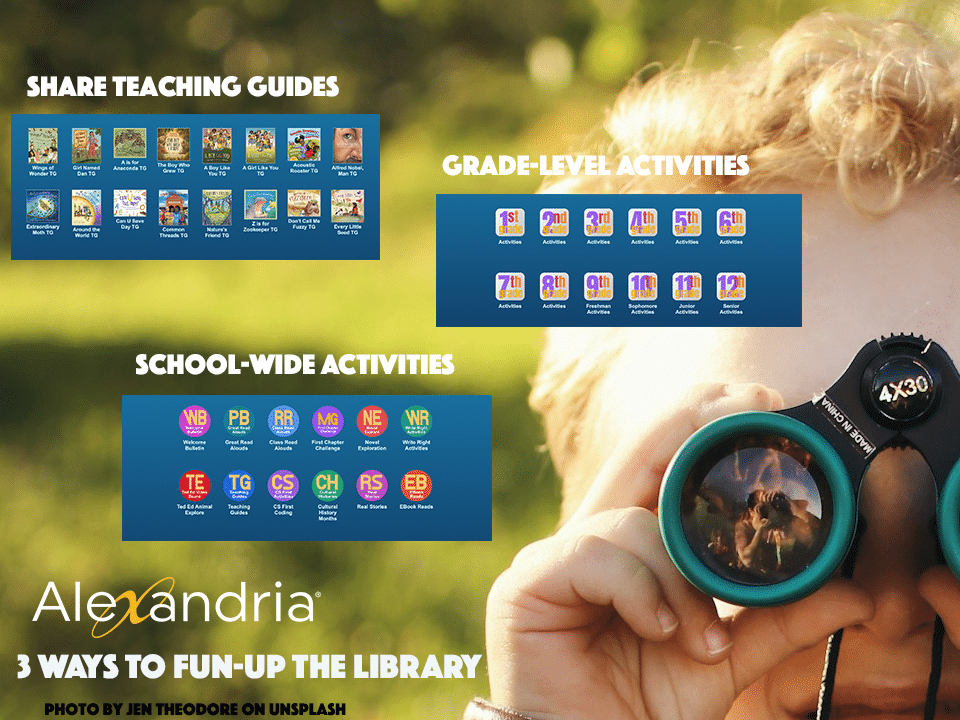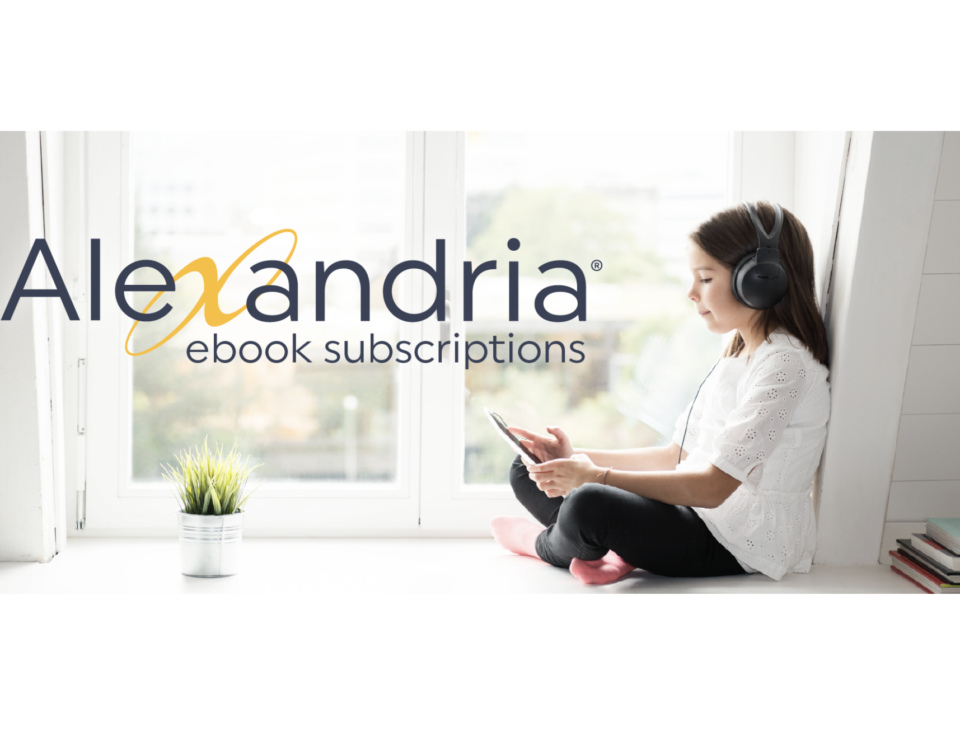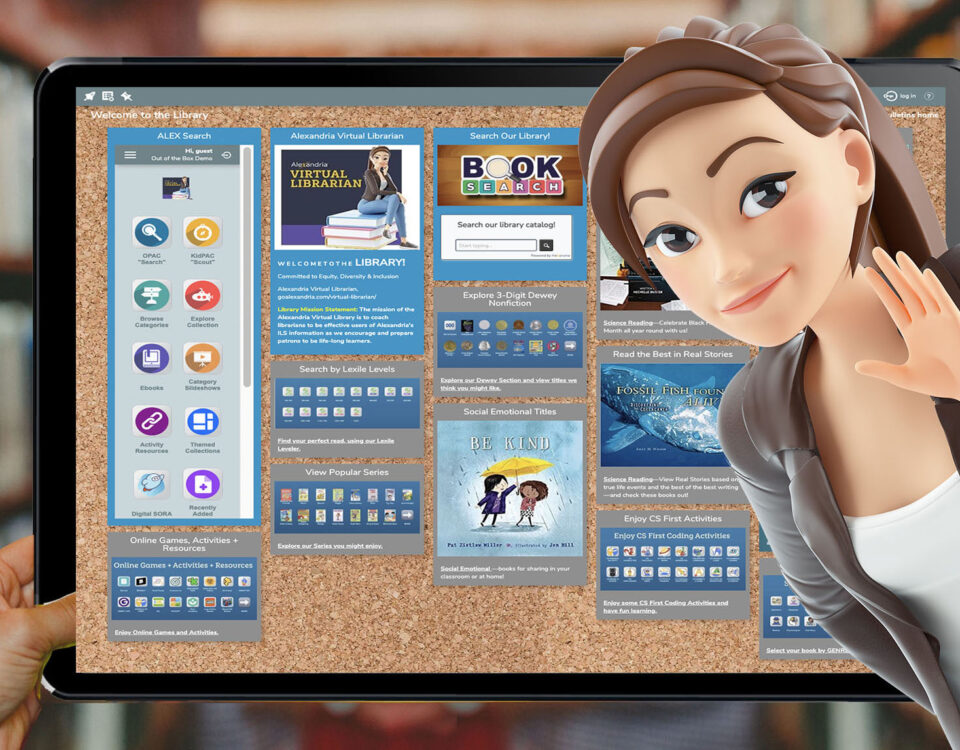
Dewey or Don’t We? Dewey Decimal vs. Genrefication
January 30, 2019Springtime Reading Posters and Displays
March 13, 20199 Reasons to Build a Digital Library at Your School

Are you part of the 80% of US schools that use ebooks? Ebooks are becoming a standard tool in today’s classrooms and libraries. As advocates for librarians and books, we can see both the appeal and the reluctance toward ebooks. Nothing can beat having a physical book in your hand—but ebooks have incredible features and tools that can help children become lifelong learners.
So What’s the Big Deal about Digital Libraries?
If you haven’t invested in ebooks, you are missing out on features and tools to:- make books more accessible for students
- measure the influence of the school library on student and educator success
- help students become critical thinkers, information gatherers, and savvy digital media users
With this in mind, here are the top reasons why you should develop a digital collection at your school library.
9 Reasons to Build an Ebook Collection at Your School Library
1| Engaging Students in Learning
Useful features commonly found in ebooks can engage readers more thoroughly than traditional books. Readers can highlight, draw, annotate, write journals, and cite sources using ebook features. Reluctant and struggling readers benefit the most from ebooks that involve the senses. ebooks can give students a full reading experience by emerging them into the text using animations, sound effects, and relevant imagery.For example, ebooks with animations can show students the definition of a word. A student reading a text about animals may be unsure what the word "stampeding" means. The student can click on the animation of a group of animals in which it will show the animals running together. The student can then infer that "stampeding" means to move together. Ebook tools, like animations, help students to infer and learn the definition of unfamiliar vocabulary in a fun and engaging way.
2| Creating a Love for Digital and Print
Ebook collections are not to replace physical books, but to aid in the love of reading and learning. Digital libraries give educators powerful tools to teach students how to find, evaluate, and use digital content—an essential skill for 21st-century learners. Digital texts incorporate multimedia, like animations or sound, for practicing reading comprehension and literacy skills.Digital libraries pique general interest in reading. Results indicate that exposure to a digital library led students to prefer both print and electronic books, rather than one or the other exclusively.
3| Building Skills from Read-Alouds
The benefits of listening to books read aloud is one of the single most important activities for reading success. Not only do children love being read aloud to, but it provides students with a demonstration of reading comprehension skills.Digital texts allow books to become read alouds, giving the reader the ability to follow along. Built-in read-aloud functions give students the opportunity to learn from books with a higher reading level without needing help from a teacher or parent. This further develops reading skills and gives students the tools to read challenging books.
4| Accessing More Choices
Ebooks save time, money, and storage. Not only does a digital library make books more accessible to students and educators, but the convenience factors of downloading and returning ebooks are a significant advantage for students. Digital libraries cost far less than physical books, allowing librarians to stock up on a variety of titles.5| Supporting Bilingual Speakers
Students with English as their second language can utilize tools like the built-in dictionary in ebooks. Readers can quickly look up unfamiliar words, while the recorded audio can provide auditory models of the correct syntax and grammar for the English language.Digital texts can also incorporate other languages, such as Spanish, to make it possible for family members with limited English proficiency to read with their children.
6| Aiding in Reading Comprehension
Students can express ideas, opinions, ask questions, and create discussions using highlight or underlining tools. This means they can identify story elements, plot, main ideas, and supporting details within the text, annotating as they go. The level of interaction contributes to reading comprehension.The best perk is that students are free to mark up their book as much as they want! When the next student goes to use that ebook, it will be a clean slate for them.
7| Increasing Literacy Rates
Ebooks are engaging. They spark interest even in reluctant and struggling readers. Students apply reading comprehension skills, and read more difficult texts, when using digital libraries—leading to higher literacy.Some digital books are customizable to fit the needs and wants of the reader, making books fit the needs and wants of the reader. This is proven especially helpful for students with dyslexia and impaired vision, by allowing adjustments to text font, backlights, colors, and text to speech. Customizable features give students with disabilities the tools to become better readers.
8| Enhancing Classroom Libraries
Classrooms can benefit from a digital book collection. When ebooks are accessible, educators are no longer limited to a few titles with only twenty or so copies. Classrooms libraries can become more robust to incorporate more creative projects and activities to help students engage with the text.9| Empowering Librarians
Books, ebooks, magazines, graphic novels—these are all tools for the librarian to help individuals fall in love with reading. Digital library collections give librarians more time to focus on students and programs because they are not held up in the process of reshelving books. Or setting aside holds. Or digging through the bookdrop. Or replacing labels. Or straightening water-damaged pages. Or inventorying—you get the picture.Ebooks also record valuable data such as how long students have been reading, what level they are at, and how well they understand the material. Librarians can then monitor, analyze, and make recommendations based on real-time insights into students and their reading.
Ebooks + Alexandria
Our ebook integration makes it easy for your patrons to find and access ebooks directly through Alexandria. Choose to have the library you want with Alexandria’s ebook integration options. We partner with industry-leading vendors like OverDrive, MackinVIA, Axis360, and Perma-eHub. The choice is yours!Find out how you can utilize the tools and features of ebooks in your school library!






1 Comment
Send more articles related with digital. The article really valuble. Lots of thanks for this source